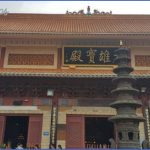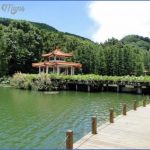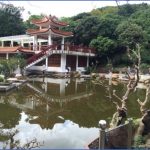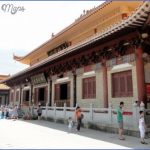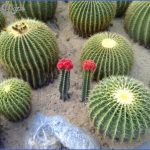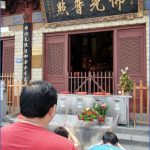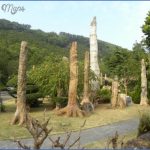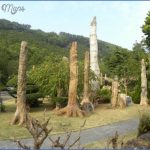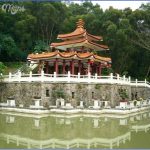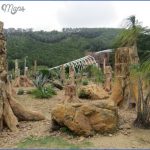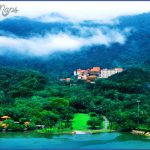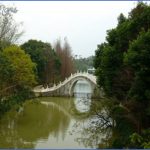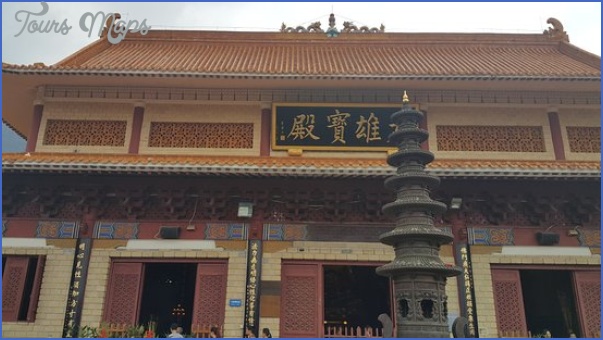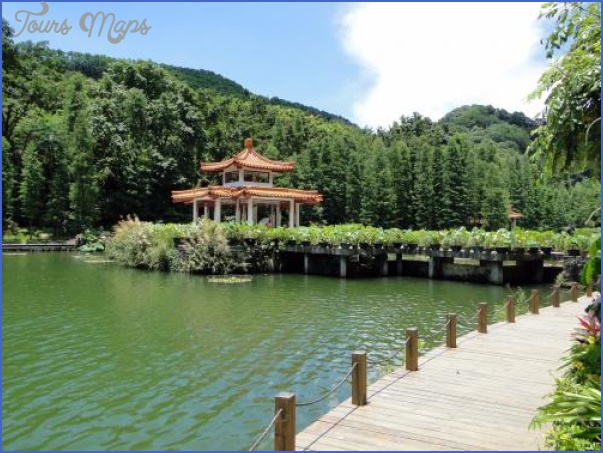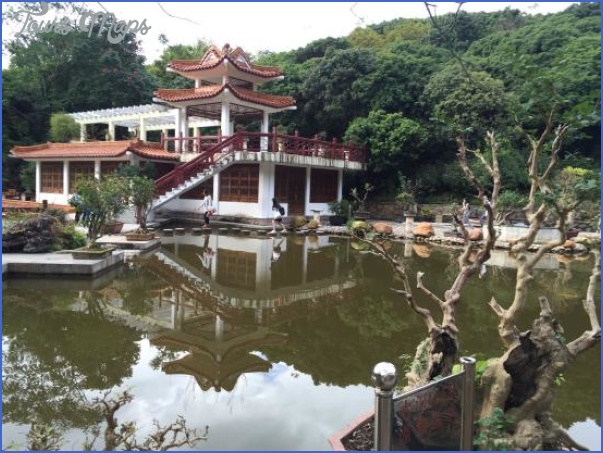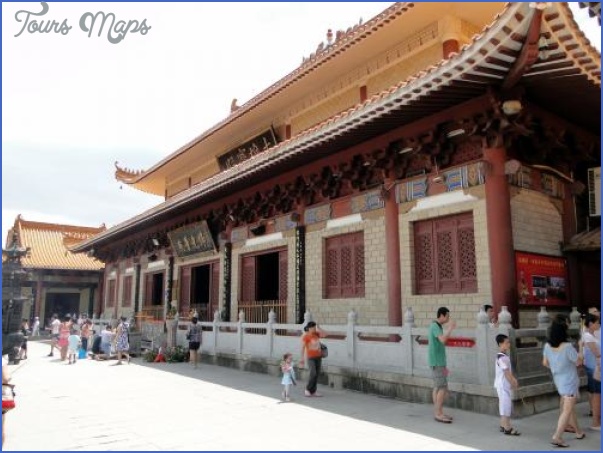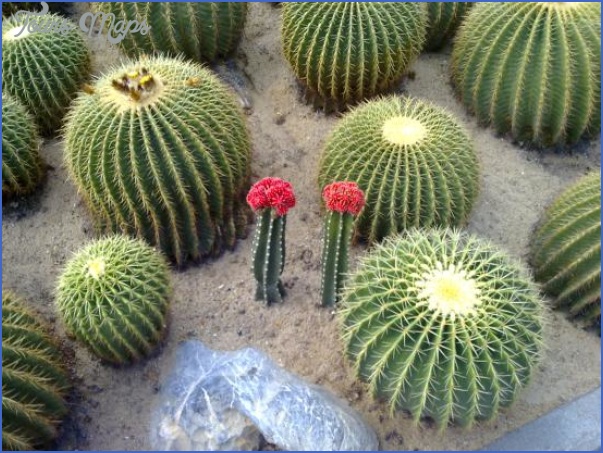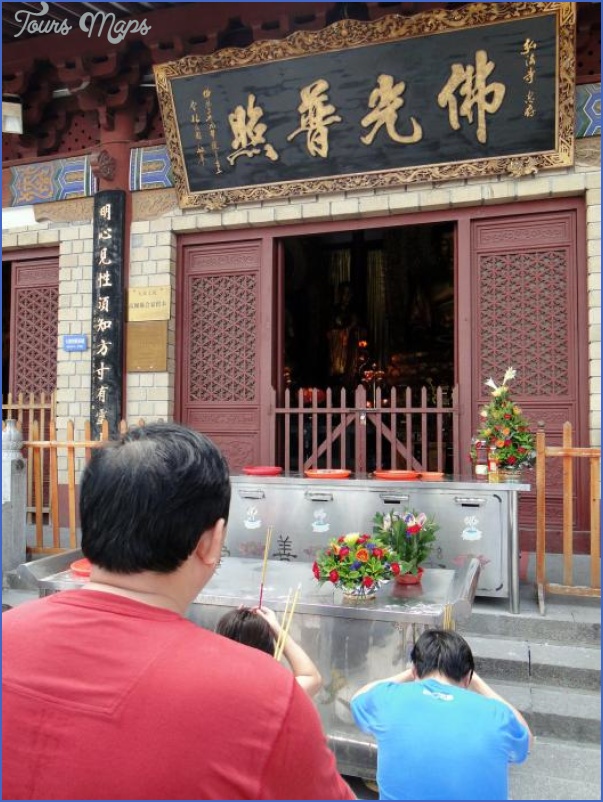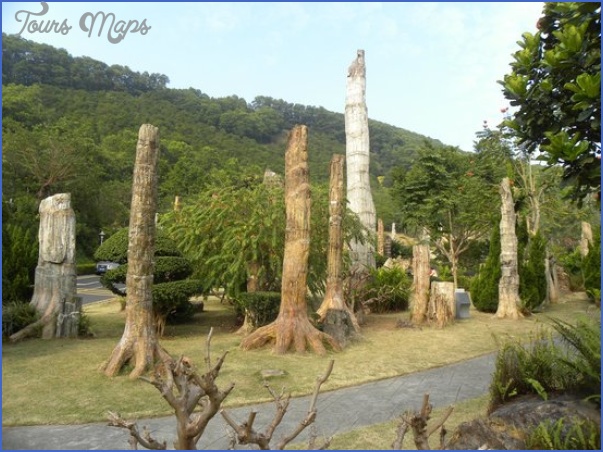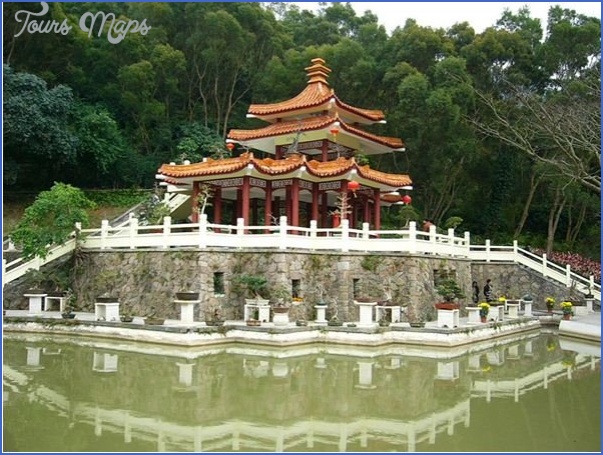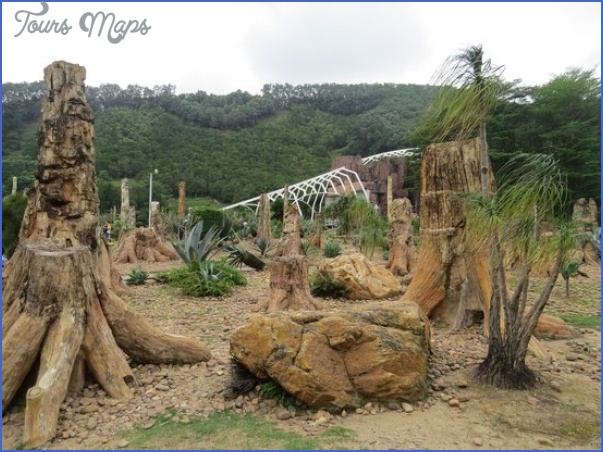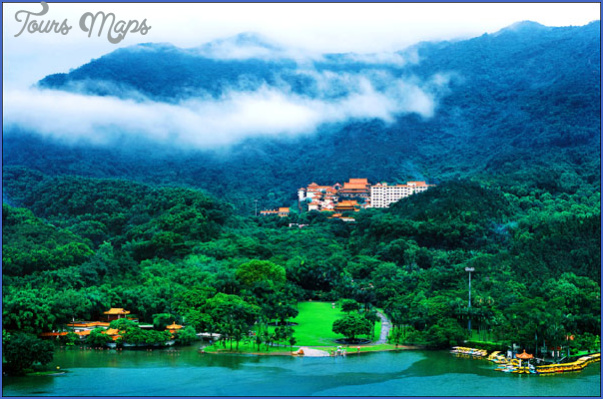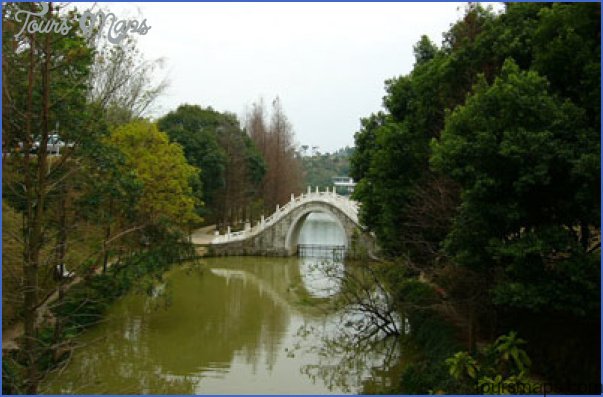If you like beautiful mountain scenery and gardens in the Chinese manner, or are fascinated by the revival of Buddhism in China, the Xian Hu Botanical Gardens is the place to go.
But first a word about the name.
You will often see this translated as Fairy Lake Botanical Gardens. We prefer the translation Lake of the Immortals. The veneration of people who have become immortal is an ancient tradition in China, originally associated with Daoism, but subsequently spread to all religious traditions. It has been documented since the Han Dynasty third century BC to third century AD when eight great scholars of the Western Han Dynasty were venerated as immortal. In its current form it goes back approximately 800 years to the Jin Dynasty in Northern China, when the Quanshen Daoist sect first venerated the Eight Immortals.
The Eight Immortals are one of the most common themes in popular art in China and you can see them depicted everywhere. They are symbols of prosperity and longevity. They are often associated with mountain ranges where the peaks are said to represent the Immortals. The gardens sit on 587 hectares on the slopes of Wutong Mountain. Wooded slopes, deep misty gullies, palm and bamboo groves, a series of peaceful lakes and hidden artificial gardens conspire to make this one of the most wonderful areas of the city.
Sunday morning in October. The temperature and humidity have dropped. A passing typhoon has cleared the air. It’s still hot by most people’s standards but for those of us who have just gone through high summer it is just balmy.
We are lined up at the gate of the Gardens with hundreds of Buddhist pilgrims. They have come from all over China, Hong Kong, and, going on their accents, as far away as Taiwan. We bustle onto the air-conditioned bus. It climbs steeply through forested hills. We glimpse occasional small farms with their neat furrows in the red earth. A magnificent vista of a lake opens before us with pavilions and an eight level pagoda. Then we dive back into the forest, now dominated by araucaria and palms. Eventually we emerge at the Hong Fa Buddhist Temple, golden roofs one on top of the other climbing the mountain. We are about half way up Wutong Mountain and a magnificent vista of lake, mountain and forest lies below us.
The pilgrims pile out of the bus and join hundreds of others praying for good fortune.
Why is the Hong Fa Temple such a magnet for Buddhist pilgrims? It’s a pleasant but not particularly architecturally exciting building. It certainly isn’t old. It was completed only in 1998.
The answer lies in its first abbot, Ben Huan. When he died in 2012 at the age of 105, Ben Huan, was one of the great figures in modern Chinese Buddhism and one of the leading figures in the revival of Buddhism after the Cultural Revolution. He became a monk in 1930 and taught at most of the leading Buddhist sites in China, particularly at one of the most sacred on Wutai Mountain in Shanxi. We don’t have the space to enumerate all of the pious practices at which he excelled or the miraculous happenings associated with him. There is a long biography of him on the walls of the Temple. The event that impressed us most happened in 1937. He ascended Wutai Mountain to join the Monasteries. He started at Ding County in neighbouring Hebei Province and walked the hundred miles in the Buddhist pilgrim manner, three paces followed by a full kowtow. The journey took him sixty-five days. His biography records that his feet were swollen and that there was layer upon layer of calluses on his knees but his heart was filled with joy.
Ben Huan had an ambiguous relationship with the Communist Party. The great Wutai Mountain shrines were a place of refuge for the Communist Eighth Route Army during the 1940s and particularly during the period when Chiang Kai-shek chased them out of Yan’an. Ben Huan offered succour and hospitality and this accrued to his credit during the early days of Communist rule when Buddhism came under the administrative aegis of the Chinese Buddhist Association. But in 1958 at the time of the Anti-Rightist Movement, Ben Huan was thrown into jail where he remained until 1980 when, as his Chinese biographer says, he bid farewell to the iron windows.
After then he dedicated himself to the rebuilding of Buddhism in China. He restored innumerable ancient temples and built at least eight major new temples, one of which is the Hong Fa Temple.
The new strength of Buddhism in China manifests itself in many ways. As you walk around the courtyards of the temple and ascend its many levels you will see just the sheer numbers of believers praying and burning incense and it is difficult to come to terms with the fact that, forty years ago, the older among them were waving their red-banded arms and screaming imprecations against precisely the kinds of superstition which they are now practising. The enormous numbers of young people praying is also an indicator of the strength of the revival. At one side of the temple is an enormous seven storey modern building, with traditional curved eaves. This is the living quarters of the hundreds of grey and saffron robed monks who now live in the monastery.
We wandered around the temple marvelling at the sheer impossibility of it and then we came to an important fork in the road. No. It wasn’t a decision to grasp the path to Nirvana. It was simply that at this point you could choose to continue the climb to the top of Wutong Mountain or go down.
We chose the easy way.
Suddenly we plunged into a path along a babbling crystal clear stream that disappeared into a deep forest. Down, down, past a small group of monks taking a moment off Nirvana talking on their mobiles and reading the paper. The forest opened up a little and the crepe myrtle gave way to tall stands of bamboo, mainly our favourite, the Buddha’s Belly with its rounded sections. A film crew was shooting a kung fu movie. A woman was doing the moves very gracefully creating a calm atmosphere. Then the calm was shattered as she snapped her fan open and we realised that it was made of steel and a lethal weapon. We wove our way through the film equipment. Around a corner the lake! We took seat in a gallery that ran along the shore of the lake and drank Dragon Well tea.
There are lots of recreational attractions in the gardens. We loved the cactus garden. Isn’t it universal that real gardeners spend most effort trying to grow plants, which by all normal criteria should be impossible in their climate? Cacti in Shenzhen’s 35 degree 85% humidity leap to mind.
The bonsai garden set in open galleries around two artificial lakes in a wooded valley is just lovely. And we have to admit that the boy in us would never miss a forest of petrified trees, which have been brought in from all over China. Especially not when they’re set up in front of one of the better palaeontological museums that we’ve seen.
But at the end of the day, this is a Botanical Garden in the grand tradition and the growing of rare plants and protection of endangered species is high on the list of the garden’s objectives. There are many specialised areas. We liked the cycad garden, the shade tree garden and the endangered species garden. And if you’re in town during the seasons, don’t miss the massed azalea displays or the lotus lakes. In Shenzhen the best times for these are March and late May respectively. The specialised garden, which we found most interesting, was the Medicinal Plants Garden that is a tribute to the antiquity of Chinese medicine. It is situated about half way down the mountain to the North West of the lake, just south of the eleven-arched marble bridge. It nestles in a valley and has busts of some of the most famous ancient Chinese doctors and medical scientists.
There is a 12,000 volume botanical library, a herbarium with 12,000 species and five laboratories.
For $4, a bus takes you from the Park gate to the Hong Fa Temple. You can go back down with it if you like. We prefer the open sided tram at the top near the temple which gets you round the garden at a leisurely pace and lets you hop off and on at will.
Address: Lian Shi Rd, Lian Tang Village. Luohu District
Open: 7 am to 10 pm Entry: $20
Buses: 218, 220 to the garden gate
XIAN HU BOTANICAL GARDENS SHENZHEN Photo Gallery
Maybe You Like Them Too
- The Best Cities To Visit in The World
- World’s 10 Best Places To Visit
- Coolest Countries in the World to Visit
- Travel to Santorini, Greece
- Map of Barbados – Holiday in Barbados

